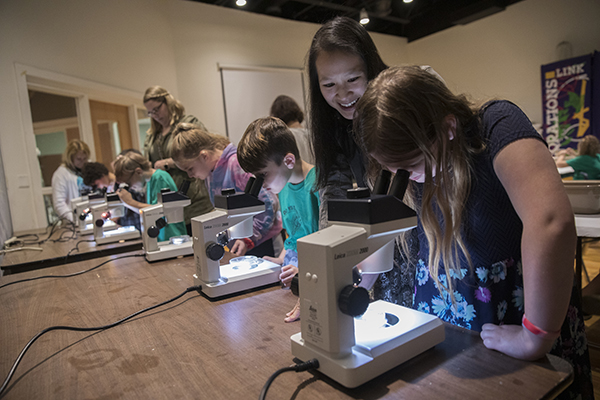Two new Provost Awards for Faculty Excellence
Community engagement in teaching and in scholarship to be recognized

The addition of two new Provost Awards for Faculty Excellence — one in community-engaged teaching and the other in community-engaged scholarship — are part of a continuing effort to raise the culture of community engagement at Binghamton University.
“Engagement with the community, which is part of our mission as a public university, is one of the pillars of our Road Map strategic plan,” said Executive Vice President for Academic Affairs and Provost Donald Nieman. “With support and encouragement from the Center for Civic Engagement, our faculty are doing important work in this area that is enhancing their scholarship and enriching the educational experience of our students while serving the community. These awards are meant to recognize the outstanding work that they are doing through teaching and scholarship.”
The awards build on work that began in 2015, when the campus launched a faculty fellows program through its Center for Civic Engagement. Barrett “Barry” Brenton is the faculty engagement associate who supports faculty in their work with students and community partners. These new awards, he said, help to formalize the recognition of community-engaged faculty, provide a definition of what community-engaged scholarship is and also support a culture that fosters community engagement.
This culture is particularly important as the University strives to achieve the Carnegie Foundation Elective Classification for Community Engagement, a special-purpose classification based on voluntary participation that underscores an institution’s commitment to community engagement. According to the Howard R. Swearer Center at Brown University, which houses the classification, it is not an award, but “is intended to assist in a process of institutional change to improve the educational effectiveness of the campus through the institutionalization of community engagement.”
The culture has already existed on campus, Brenton said, but is now moving forward. “We’re making sure there is a firm commitment and that we’re moving forward toward this classification,” he said. “Nationwide, there’s not a discipline not looking at this. Everyone is finding ways to do community engagement and experiential learning.
“We’ve put our feet into a pretty big goal, including looking at all kinds of assessment, and we’ve stepped into the questions about promotion and tenure guidelines in addition to plugging along and getting the word out,” Brenton added. “There are Center for Learning and Teaching events and workshops every semester. We’re getting out to every department and have spoken at chair and department meetings.”
There is already a course designation for community engagement, Brenton explained. Courses need to address the community partnerships and how they provide students opportunities for community-engaged learning and how students will be assessed. That might be through a reflective paper or a project.
“There is a whole spectrum listed in course goals and objectives,” Brenton said. “In terms of the process, faculty lay out the community-engaged aspect and the key point to us is that the community engagement must be of benefit to faculty, students and the community partner. There must be some reciprocity, so they need to articulate that in the proposal.
“This is a challenge everywhere — what is the impact on the community partner? How can they put in place the assessment process for that? It’s an overall a challenge, even for the Carnegie classification.”
Brenton described work in the Department of Art and Design and in graphic design classes that are working on signage around access for people of differing abilities at the Ross Park Zoo as an example that clearly demonstrates the reciprocity of community-engaged learning.
The work that both Jessica Hua and George Meindl are doing are examples. “They’re looking at local ecosystems, but also at the impact on the community,” Brenton said. “It’s a combination of involving community in the research and also the outreach. It’s the students’ research embedded in the community issues they’re looking into, and you don’t have to separate students from your own scholarship. This is service broadly speaking, but it can be a way to change teaching and tie it to your scholarship, publishing the same as always, just adding a community-engagement component.”
There is no magic number of classes or class hours or anything for the Carnegie classification, Brenton added. “The key point is that we show a culture of engagement. We have our fellows program, a small grants program and designated courses, but it’s not just about designating, it’s also about building that culture of engagement.”
The full commitment to moving toward Carnegie has come and now we’re taking that and running with it, Brenton said. “There are different ways we can implement programs community-wise and on campus to engage faculty that great opportunities for student learning and for research opportunities.”
Applications for the Provost Awards for Faculty Excellence in Community-Engaged Teaching and in Community-Engaged Scholarship are due Friday, April 17. Find complete nomination information online.
